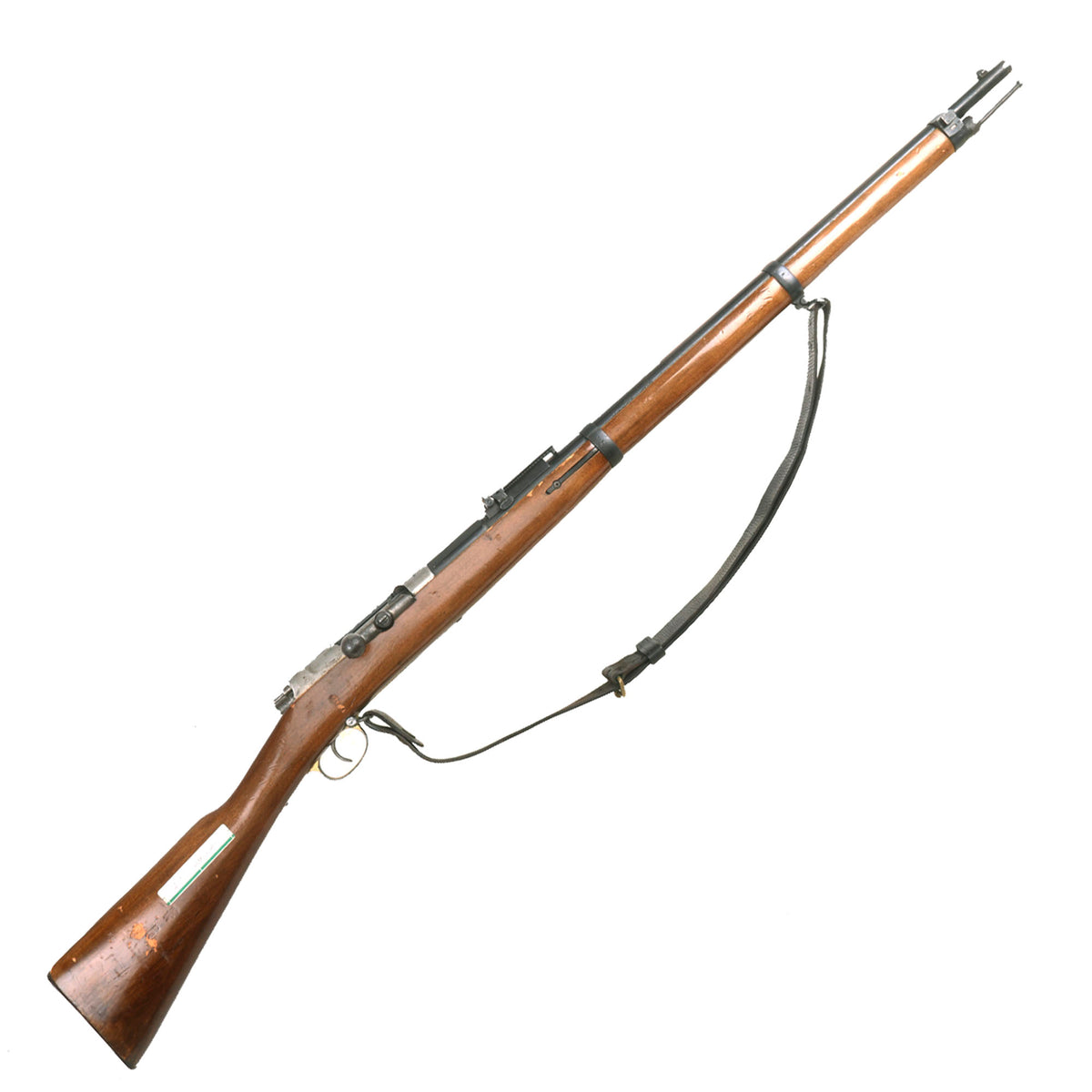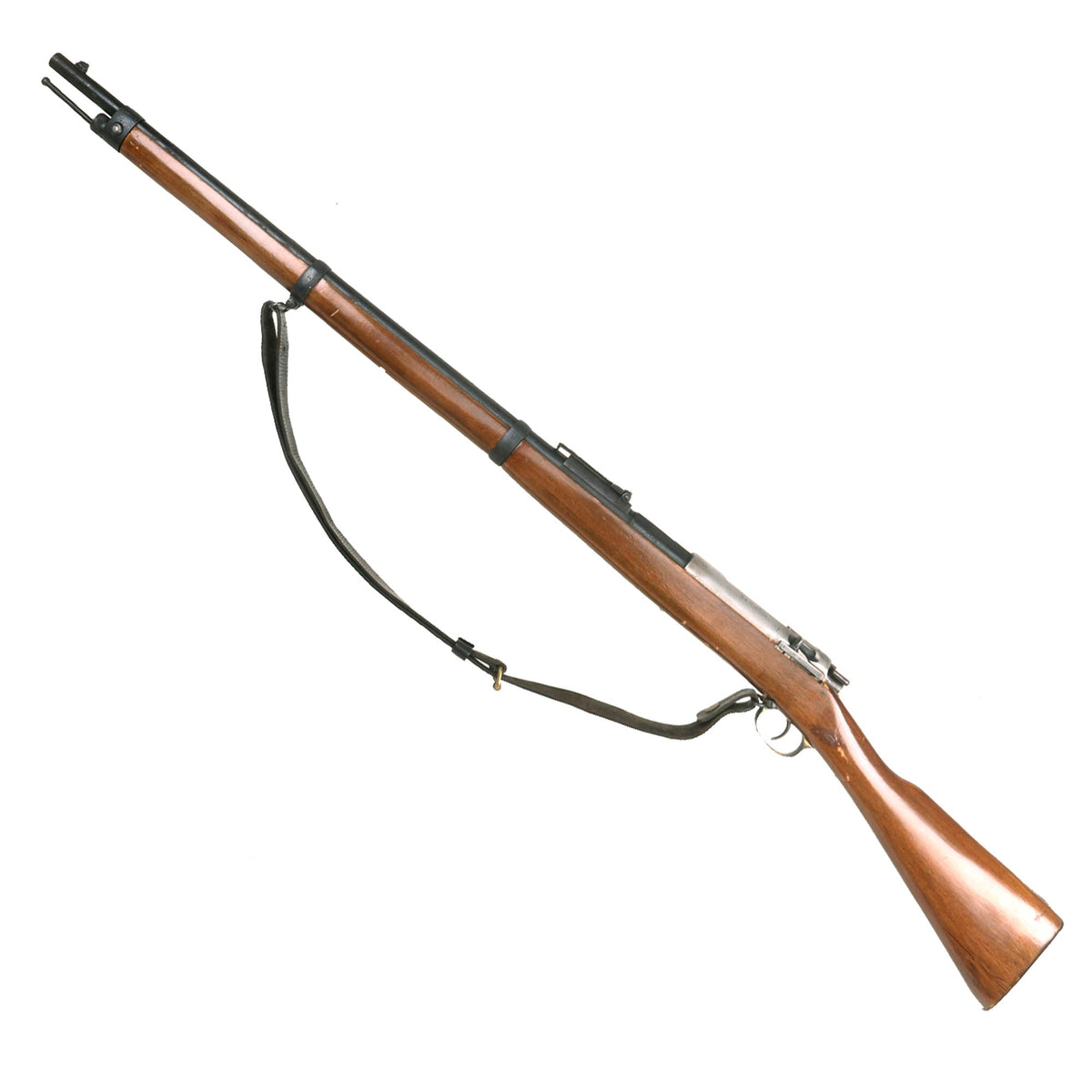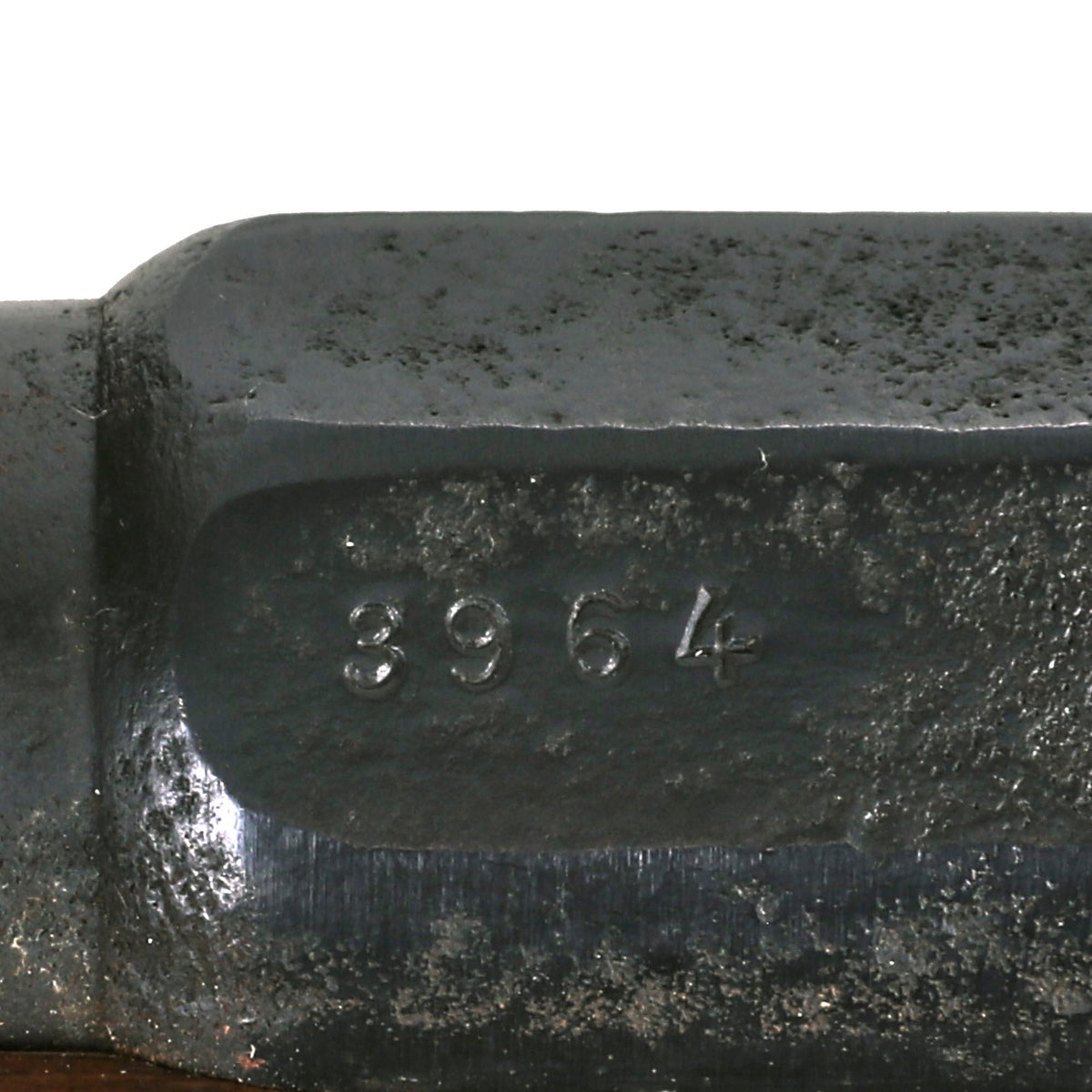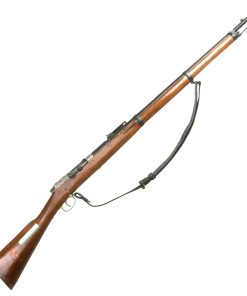Original German Mauser Model 1871/84 Rifle by Spandau Refurbished for “The Last Samurai” Movie – dated 1888 Original Items
$ 1.295,00 $ 323,75
Original Item: Only One Available. This is a very interesting example of the Mauser Model 1871/84 rifle, the first Magazine rifle widely used by the German Empire. It shows quite a bit of wear on the metal components, while the stock looks to be brand new, and even has proof markings. However, these markings were replicated, and this rifle almost certainly is one used in the 2004 Tom Cruise Movie THE LAST SAMURAI, which was set during the Satsuma Rebellion or Seinan War (Japanese: 西南戦争 Hepburn: Seinan Sensō, lit. “Southwestern War”). This was the internal Japanese War about the end of the samurai class.
The conflict, which took part in 1877, followed the Meiji restoration, which had ended the Tokugawa Shogunate, and re-opened Japan to the world. This allowed them to acquire firearms, and the German Mauser model 1871 was one that they purchased in some quantities. They were used during the Satsuma rebellion, and later saw service in the First Sino-Japanese War, of 1894-1895. As the movie was set during the rebellion, they would need Model 1871 rifles to be fully authentic.
However, Mauser model 1871s are unfortunately quite scarce on the market, and any large stocks were long gone. However, a large cache of Mauser Model 1871/84 rifles was present in Ecuador, and these were being imported and subsequently used to supply the movie. These were imported by the Gibbs Rifle Company, Inc., which supplied approximately 300 original Mauser 1871/84 rifles for the film through the Motion Picture Weapons company.
As the imported rifles were in worn condition, they were all refurbished by having the barrel reblued, and the original stocks were replaced with brand new replicas with German proof marks. Many had been deactivated, so they were all reactivated to fire in at least single shot for use with blanks. The magazine was not required to function, so any deficiencies there were not addressed. Most we have seen had gold painted trigger guards, such as seen on this example, though the paint is a bit worn.
The receiver is dated 1888. on the right and marked I. G. Mod. 71/84. on the opposite side in “Black Letter” typeface. The serial number 3964 is present on the barrel and receiver, while the other components are all non-matching, or no longer bear any markings. There are no regimental markings on any of the hardware that we can see. The top of the chamber is marked SPANDAU (crown is worn away), for the Prussian (and later Imperial) Spandau arsenal in Berlin, a storied production plant that would produce weapons up until 1919, including the famous MG08 Maxim. Below this is a worn Crown over FW proof for Kaiser Wilhelm I, who used this cypher during his reign 1861-1888.
As we see with these Gibbs Rifle company refurbished Mausers, the rifle is missing some components in the action, as they were not really needed to function correctly for their purpose. The magazine has no follower, and it will not even cycle if the cutoff is moved from the single shot position. The bolt does not have the extractor portion, so it also cannot bring the magazine floor plate back up. It still can cock and dry fire, and the firing pin is present, but the “wing” safety is not working.
The bore however is actually in excellent condition, showing clear lands and grooves with a bright finish. Only the last half inch or so near the muzzle shows any type of oxidation or fouling. The metalwork show some past peppered oxidation, cleaned away later during the refurbishing, though definitely still apparent. The metalwork was reblued, and the receiver area polished, and it overall still looks very nice. The stock shows some light wear from use, but still retains the original varnish quite well. It even has an aged sling on it, which could be original to the movie production, but we have no way of knowing for sure.
This is a chance to add a really interesting Mauser rifle to your collection. A true MOVIE STAR! Ready to display!
Specifications:-
Years of Manufacture: 1888
Caliber: 11x60mmR Mauser
Cartridge Type: Centerfire Cartridge
Barrel Length: 32 inches
Overall Length: 51 Inches
Action type: Bolt-Action
Feed System: 8 Round Tubular Magazine
Originally adopted as the Gewehr 71 or Infanterie-Gewehr 71, or “Infantry Rifle 71 (“I.G.Mod.71” was stamped on the rifles themselves) this was the first rifle model in a distinguished line designed and manufactured by Paul Mauser and Wilhelm Mauser of the Mauser company, and later mass-produced at Spandau arsenal.
Paul Mauser developed his bolt-action rifle from 1866 to 1871. During 1870-71 trials with many different rifles took place, with the “M1869 Bavarian Werder” being the Mausers’ chief competitor. The Mauser was provisionally adopted on 2 December 1871, pending the development of an appropriate safety. With support from the government’s Spandau arsenal, the improvements to the safety mechanism were completed and the rifle was formally accepted on 14 February 1872 as Infantry Rifle Model 1871 by the German Empire excluding Bavaria. The action was not based on its predecessor, the Dreyse needle gun which had seen service during the Franco-Prussian War of 1870-71, and which was found to have a number of weaknesses.
The now well known Mauser “wing” type safety lever was developed for the Gewehr 71. The Gewehr 71 is a conventional looking bolt action chambered in 11mm using black powder cartridges. The action included only a bolt guide rib as its single locking lug, locking forward of the receiving bridge. The original design was a single-shot. The design was updated in 1884 with an 8-round tubular magazine designed by Alfred von Kropatschek, making this Germany’s first repeating rifle. This version was designated the Gewehr 1871/84. A version of this repeater was adopted by the Ottoman Empire. Designated the M1887, it differentiated from the M71/84 in that it had a side mounted cleaning rod, a second locking lug on the rear of the bolt, and it was in caliber 9.5×60mmR, which Paul Mauser touted as the most efficient (black powder) cartridge. In the early 20th century a few were converted to 7.65×53mm smokeless by the arsenal in Ankara.
NOTE: International orders of antique firearms MUST be shipped using UPS WW Services (courier). USPS Priority Mail international will not accept these. International customers should always consult their country’s antique gun laws prior to ordering.
Fast Shipping with Professional Packaging
Thanks to our longstanding association with UPS FedEx DHL, and other major international carriers, we are able to provide a range of shipping options. Our warehouse staff is expertly trained and will wrap your products according to our exact and precise specifications. Prior to shipping, your goods will be thoroughly examined and securely secured. We ship to thousands clients each day across multiple countries. This shows how we're dedicated to be the largest retailer on the internet. Warehouses and distribution centres can be located throughout Europe as well as the USA.
Note: Orders with more than one item will be assigned a processing date depending on the item.
Before shipping before shipping, we'll conduct a thorough inspection of the items you have ordered. Today, the majority of orders will be delivered within 48 hours. The delivery time will be between 3-7 days.
Returns
The stock is dynamic and we cannot completely manage it because multiple stakeholders are involved, including our factory and warehouse. So the actual stock may alter at any time. It's possible that you may not receive your order once the order has been made.
Our policy is valid for a period of 30 days. If you don't receive the product within 30 days, we are not able to issue a refund or an exchange.
You can only return an item if it is unused and in the same state as the day you received it. You must have the item in its original packaging.
Related products
Uncategorized
Uncategorized
Uncategorized
Uncategorized
Australian WWII Owen MK1 Machine Carbine SMG Custom Fabricated Replica with Sling Original Items
Uncategorized
Uncategorized
Angolan Rebel 1970s era 60mm Inert Display Mortar from Angolan Civil War Original Items
Uncategorized
Uncategorized
Uncategorized
Uncategorized
Armoured Fighting Vehicles of the World: AFVs of World War One (Hardcover Book) New Made Items
Uncategorized
Uncategorized
Band of Brothers ORIGINAL GERMAN WWII Le. F.H. 18 10.5cm ARTILLERY PIECE Original Items
Uncategorized
Uncategorized
Uncategorized
Uncategorized
Uncategorized
Uncategorized
Uncategorized












































































